Siamese Cat Colors. Siamese cats are known for their striking appearance and unique coat colors. From their piercing blue eyes to their distinct patterns, Siamese cats are a popular breed among pet owners.
There are a variety of Siamese cat colors, each with their own unique variations and genetics. In this article, we will dive into the different coat colors and patterns of Siamese cats, as well as provide a Siamese cat color chart for easy identification.
Whether you’re a cat enthusiast or considering adopting a Siamese cat, understanding their coat colors and variations is essential. In the following sections, we’ll cover everything from the most common Siamese cat colors to the rarest variations, as well as provide tips on how to maintain their vibrant coat colors.
Understanding Siamese Cat Coat Colors
Siamese cats are known for their striking coat colors and patterns. Understanding the different variations is crucial for both breeders and pet owners alike. The Siamese cat breed has a limited number of coat colors, but the variations within those colors are plenty. These unique colors and patterns are the result of specific genetics.
Siamese cat coat colors are determined by temperature-sensitive genes. This means that their coat color will change depending on the temperature of their surroundings. The colder parts of their body, such as their ears, tail and feet are darker, while the warmer parts are lighter. The points refer to the darker parts of their coat.
Some of the more common Siamese cat coat colors include:
| Color | Description |
|---|---|
| Seal Point | This is the most common Siamese cat color. These cats have a cream to white body with dark brown or black points. |
| Blue Point | These cats have a bluish-white body with deep blue points. |
| Chocolate Point | This color variation features a light ivory to beige body with milk chocolate points. |
| Lilac Point | The lightest color variation, the lilac point, has a white or cream body with light pink or grayish-blue points. |
There are also some rare Siamese cat coat colors that are less common. These include flame point, lynx point, and tortie point. Flame point cats have a cream-colored body with red or orange points, while lynx point cats have a striped, tabby-like pattern on their points. Tortie point cats have a mix of red or cream and dark brown or black points, giving them a unique brindle-like appearance.
Whether you’re interested in breeding Siamese cats or just owning one, understanding their coat colors and patterns is important. By learning about the genetics behind these colors, you can ensure that your cat is healthy and well-cared for.
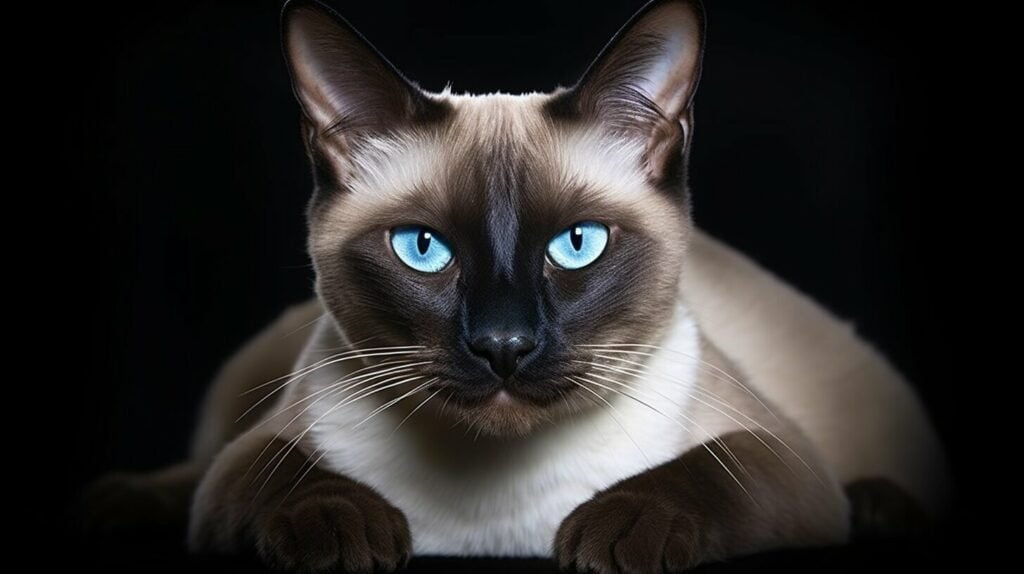
Common Siamese Cat Colors
Siamese cats are known for their striking coat colors, and there are several variations that are commonly seen within the breed. Here are some of the most common Siamese cat colors:
| Color | Description | Image |
|---|---|---|
| Seal Point | The most common Siamese cat color, characterized by a dark brown or black point color and a lighter beige or cream body color. | 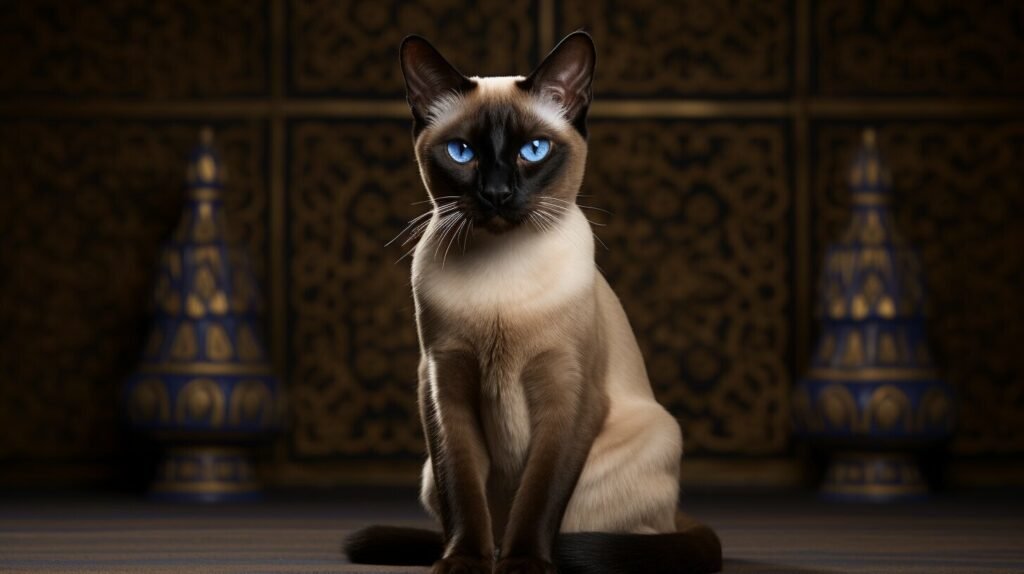 |
| Blue Point | A soft blue-grey point color and a pale grey or cream body color. | 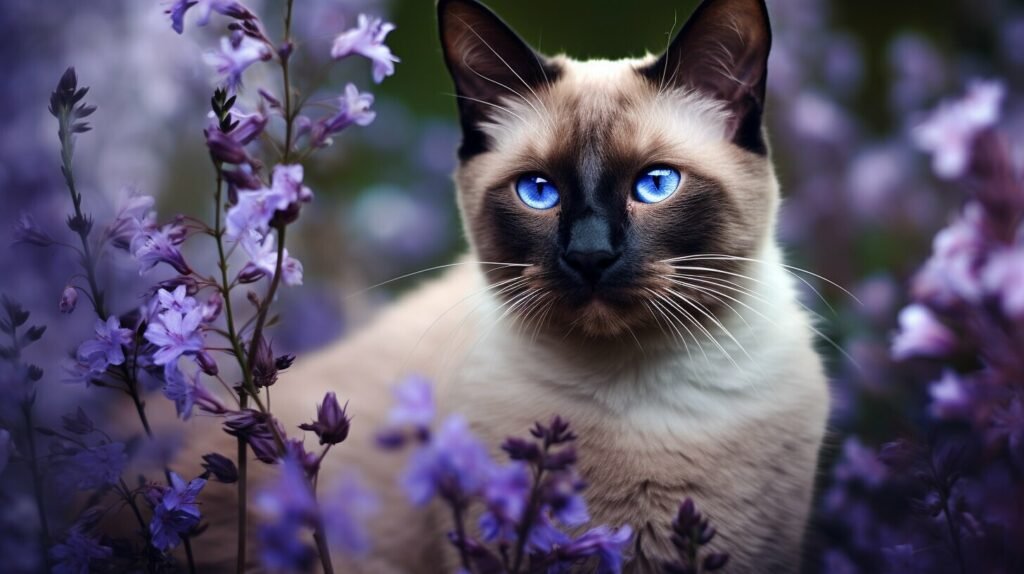 |
| Chocolate Point | A dark chocolate-brown point color and a lighter ivory or cream body color. | 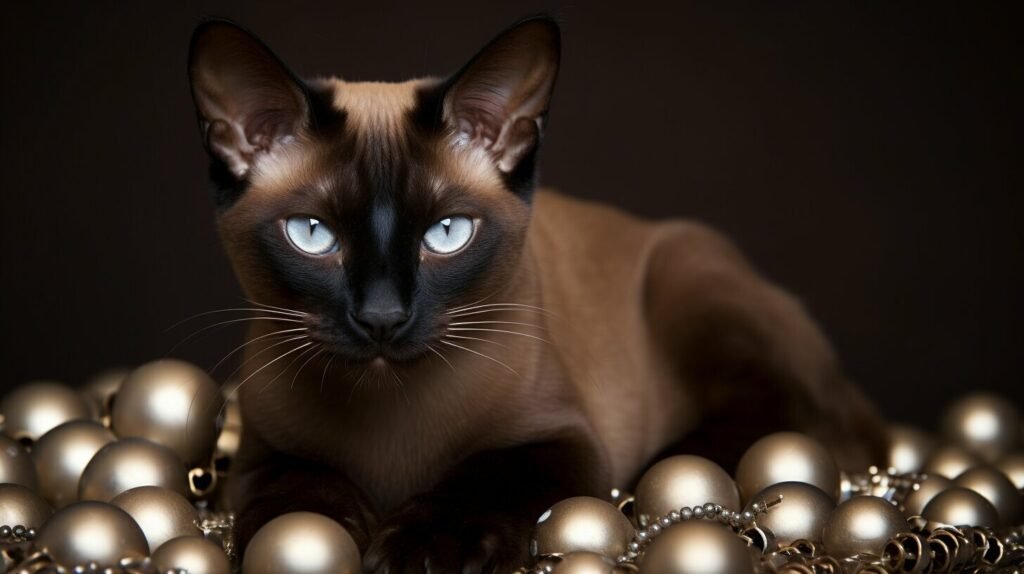 |
| Lilac Point | A pale lilac-grey point color and a white or cream body color. | 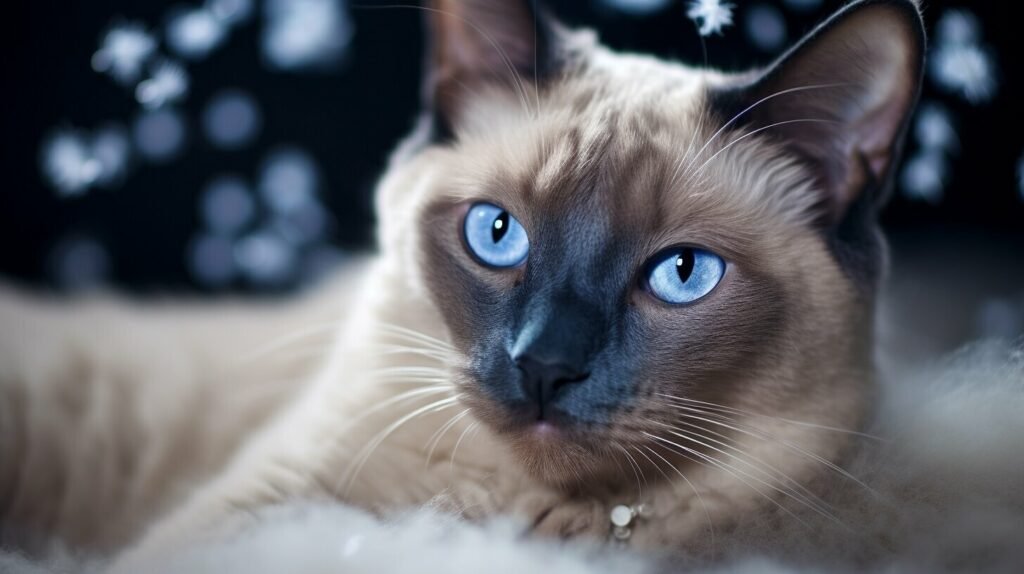 |
While these four variations are the most common, it’s worth noting that Siamese cats can also come in other colors, including red point, cream point, and even parti-color variations.
Rare Siamese Cat Colors
In addition to the common coat colors found in Siamese cats, there are also some rarer variations that are highly sought after by breed enthusiasts.
The flame point Siamese, sometimes called the red point, is a striking color variation with a pale, cream-colored body and reddish-orange points. This color is thought to be the result of a recessive gene that causes the red pigment to be more prominent.
The lynx point Siamese, also known as tabby point, is another rare variation with a distinctive striped pattern on the face, legs, and tail. This pattern is caused by a dominant gene and can come in a variety of colors, including seal, blue, chocolate, and lilac.
The tortie point Siamese, or tortoiseshell point, is a lovely variation with a mix of orange and black patches on the points. This color is caused by a combination of the red and black genes, and is therefore mostly seen in female cats.
These rare Siamese cat colors can be difficult to find and may be more expensive than the more common variations. However, their unique and beautiful appearance makes them a highly sought-after addition to any cat lover’s collection.
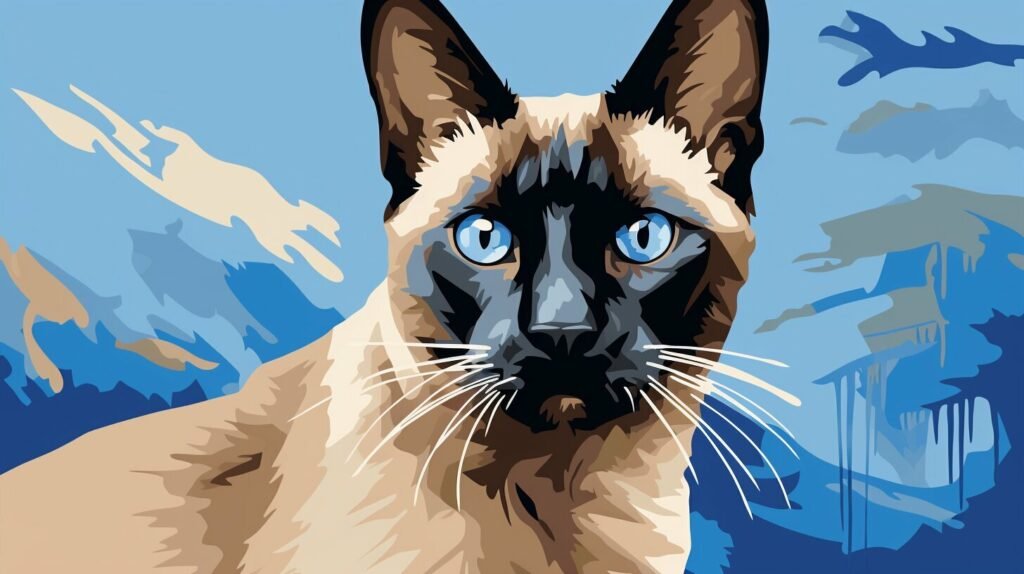
Siamese Cat Color Genetics
Siamese cat colors are determined by a combination of genetics and environmental factors. It is important to note that the Siamese cat’s distinctive coat color is caused by a temperature-sensitive gene that affects the production of pigments in the fur.
There are three main types of Siamese cat color genes: color point, solid, and spotted. The color point gene is responsible for the pointed pattern on the cat’s ears, face, tail, and legs. The solid gene produces a uniform coat color without any pattern, while the spotted gene creates a coat with spots or stripes.
The color point gene is also linked to the cat’s body temperature. When the temperature drops, the gene becomes active and causes the production of dark pigments in the cooler areas of the body. This is why Siamese cats have a darker color on their face, ears, tail, and legs, where the body is cooler.
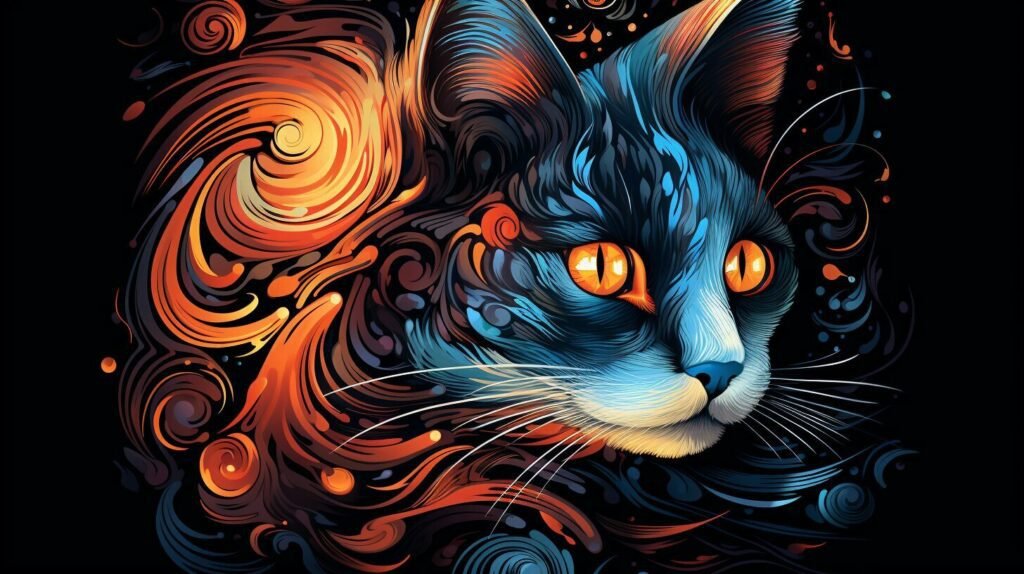
Another factor that can influence Siamese cat colors is crossbreeding. When Siamese cats are interbred with other breeds, it can result in some unique color variations. However, this is not considered desirable in purebred Siamese cats and can lead to health issues.
Temperature-Sensitive Genes
Temperature-sensitive genes play a significant role in the coloring of Siamese cats. The gene that controls the production of melanin, the pigment that gives the fur its color, is responsive to temperature changes.
When the Siamese cat’s body temperature drops, the pigment production is enhanced in the cooler parts of the body, resulting in a darker coloration. Conversely, when the body temperature increases, the production of pigment is reduced, creating a lighter coat color.
This is why Siamese cats are typically darker on their extremities, where the body is cooler, and lighter on their torso, where the body temperature is warmer.
Siamese Cat Color Chart
For those who want a visual reference to identify Siamese cat colors, the following chart provides a comprehensive guide:
| Color | Description |
|---|---|
| Seal Point | Dark brown or black points with a cream or fawn body |
| Blue Point | Blue-grey points with a white or cream body |
| Chocolate Point | Brown points with a cream or ivory body |
| Lilac Point | Pinkish-grey points with a white or cream body |
| Flame Point | Red or orange points with a cream or white body |
| Lynx Point | Tabby markings on points with a light body |
| Tortie Point | Points with red or cream mixed with seal, chocolate, or blue, with a tortoiseshell body |
Remember, the coat color and pattern of a Siamese cat is determined by genetics and can vary among individuals within the breed. Use this chart as a general reference and consult with a breeder or veterinarian for more specific information about your Siamese cat’s coat.
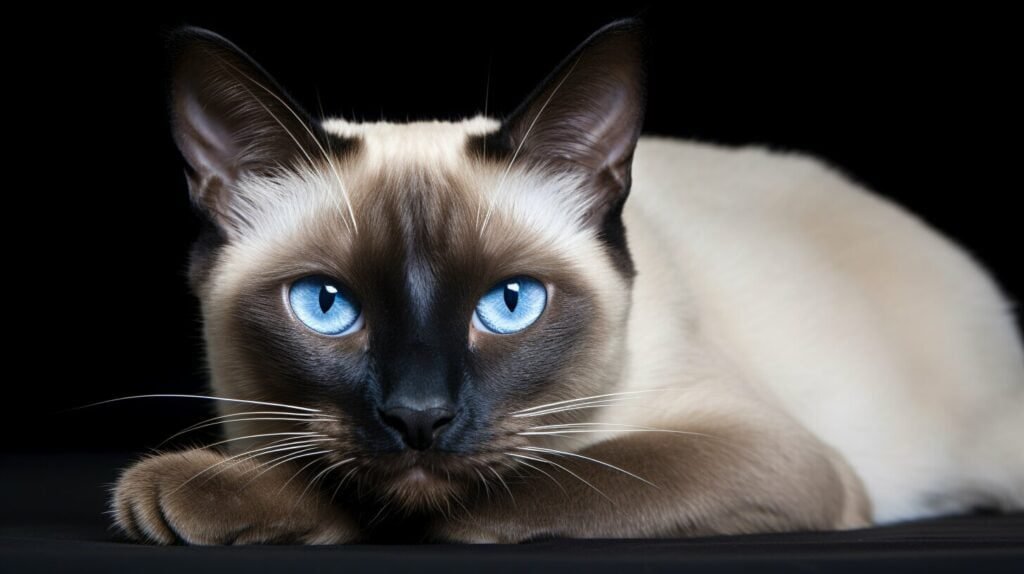
Siamese Cat Color Types
Siamese cats come in a variety of colors and patterns, each with their own unique characteristics. These colors are often categorized into different types based on their coat variations. Understanding the different types of Siamese cat colors can help owners choose the perfect furry friend for their home.
Solid Point
The solid point Siamese cat has a coat that is uniformly colored all over, with no variations or markings. These cats have a striking appearance that emphasizes their slender, elegant bodies. The most common solid point Siamese cat color is the seal point, which features a dark brown or black coat with deep blue eyes.
AMAZON
Tabby Point
The tabby point Siamese cat has a coat with distinctive stripes or spots, similar to a tabby cat. This type of coloring can be found in various shades, including seal, blue, and chocolate. The stripes or spots are usually darker than the base coat color, creating a unique and eye-catching appearance.
Tortie Point
The tortie point Siamese cat has a coat that combines two different colors, usually red and cream. The colors are blended together in a mottled or patchy pattern, creating a visually stunning appearance. Tortie point Siamese cats can also feature tabby striping, adding another layer of complexity to their coat color.
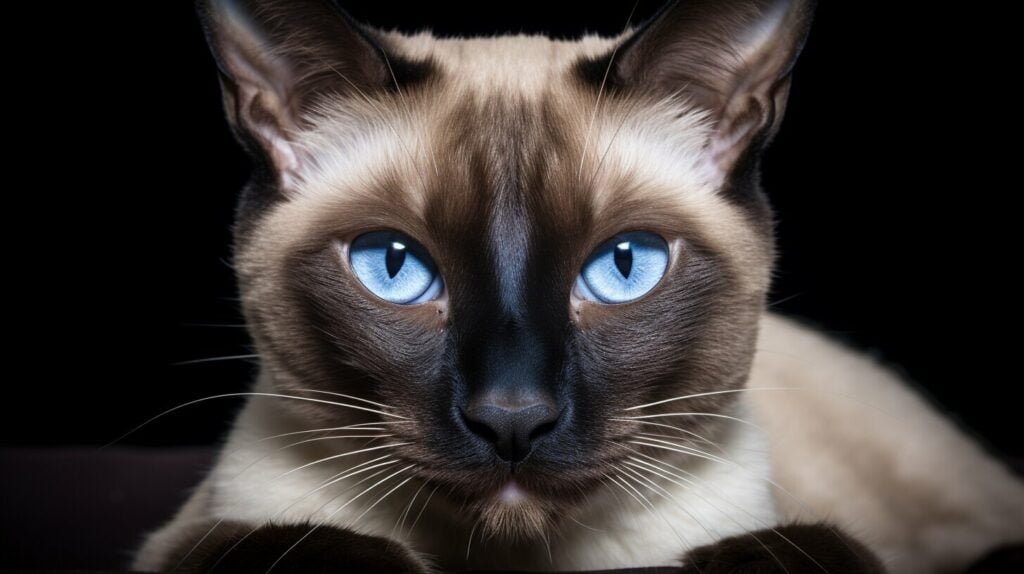
Overall, Siamese cats are known for their distinctive coat colors and patterns. Understanding the different types of Siamese cat colors can help owners appreciate the unique beauty of these beloved feline companions.
Siamese Cat Coat Variations
Siamese cats are known for their distinct coat patterns and colors, but there are also variations in their coat length, texture, and markings. Understanding these variations can help you identify your Siamese cat’s unique characteristics.
Coat Length: Siamese cats can have either short or long hair. The short-haired variety is most common, but long-haired Siamese cats do exist. Long-haired Siamese cats are also known as Balinese cats.
Coat Texture: The texture of a Siamese cat’s coat can range from soft and silky to dense and woolly. The texture can vary even within the same litter.
Markings: Siamese cats are known for their distinctive “points,” or areas of darker fur on their face, ears, tail, and legs. However, some Siamese cats may have additional markings, such as white spots or stripes on their body.
| Coat Variation | Description |
|---|---|
| Colorpoint | The classic Siamese coat pattern, with darker “points” on the face, ears, tail, and legs. |
| Mink | A softer version of the Colorpoint pattern, with darker “points” but a more muted overall appearance. |
| Sepia | A dark, rich coat color with even darker “points.” This variation is less common than Colorpoint and Mink. |
| Tortie Point | A variation of the Colorpoint pattern that includes both darker and lighter patches of fur, creating a tortoiseshell-like appearance. |
| Lynx Point | A pattern that includes tabby stripes on the face, legs, and tail, in addition to the “points.” |
Understanding the variations in Siamese cat coats can help you appreciate the uniqueness of your own cat’s appearance. Whether your Siamese cat has a short, silky coat or a long, woolly one, their distinctive “points” and other markings make them a beautiful and beloved breed.
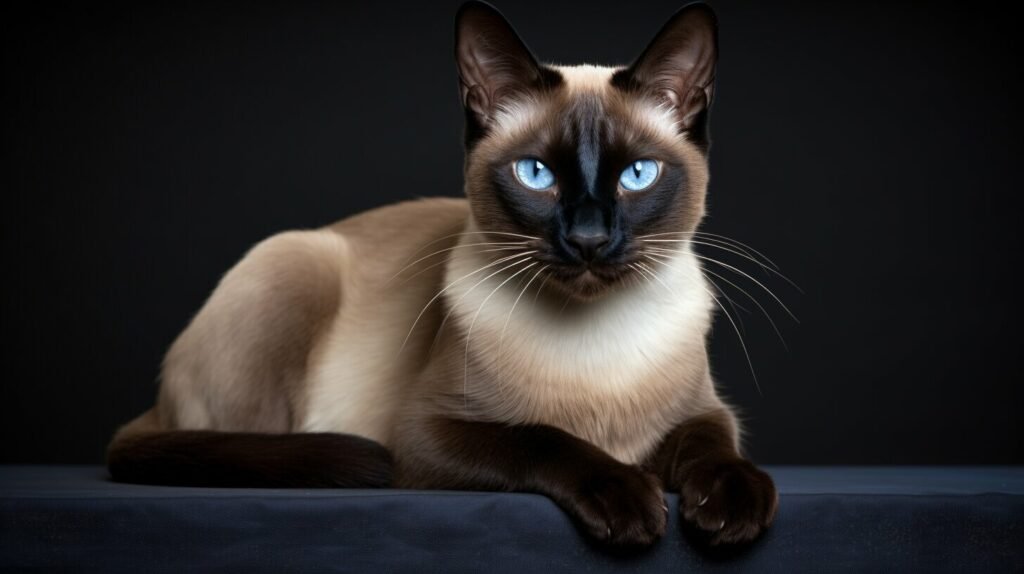
Maintaining Siamese Cat Coat Colors
Siamese cats are known for their beautiful and distinctive coat colors. Whether your Siamese cat has blue eyes, dark points, or light points, their coat requires proper care to maintain its vibrancy. Here are some tips to help you maintain your Siamese cat’s coat colors:
| Tip | Description |
|---|---|
| Groom regularly | Regular grooming is essential to maintaining your Siamese cat’s coat colors. Brush your cat at least once a week to remove loose hair and keep the coat shiny. |
| Feed a balanced diet | A balanced diet is crucial to keeping your Siamese cat’s coat healthy and vibrant. Provide your cat with high-quality protein sources, vitamins, and minerals, and avoid diets high in fillers or additives. |
| Keep them hydrated | Adequate hydration ensures your Siamese cat’s skin and coat remain healthy. Ensure your cat has access to clean water at all times and consider adding wet food to their diet. |
| Protect from the sun | Siamese cats may be prone to sunburn and skin damage. Keep your cat indoors during the hottest parts of the day and consider using pet-safe sunscreen on exposed areas. |
Taking steps to maintain your Siamese cat’s coat colors not only ensures their appearance remains striking, but also helps to promote their overall health and well-being. Keep up with routine care and enjoy the beauty of your Siamese cat’s unique coat.
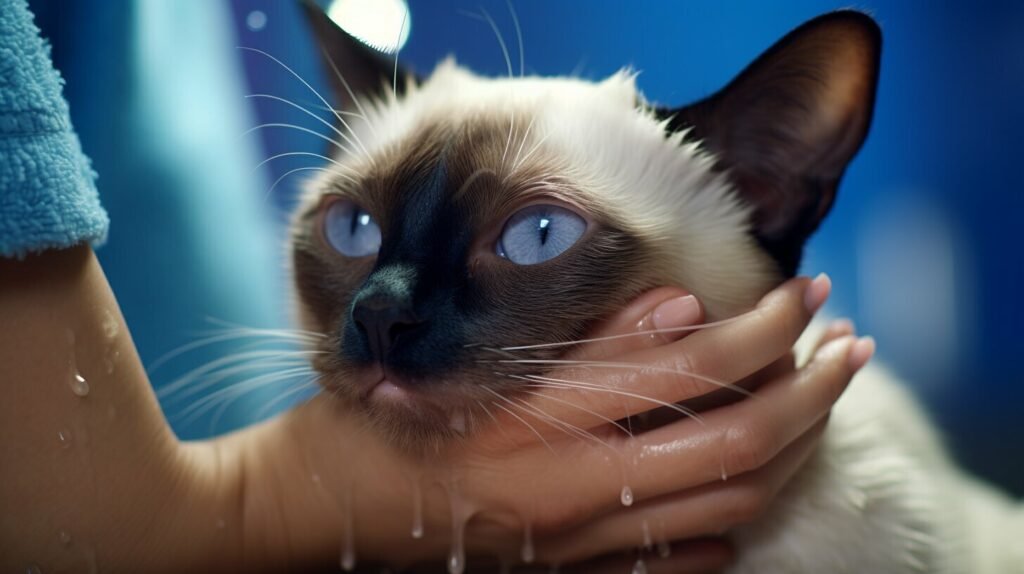
Siamese Cat Color Care FAQs
As a Siamese cat owner, you may have some questions about caring for your feline’s unique coat colors. Here are some of the most commonly asked questions about Siamese cat colors and their care:
Can Siamese cats change color?
Siamese cats are born with white fur, which gradually darkens to their permanent coat color. However, their coat color can change slightly over time due to environmental factors, such as exposure to sunlight or changes in diet. Additionally, as Siamese cats age, their coat color may become lighter or develop a gray or blue tint.
Can you breed Siamese cats for specific colors?
Yes, you can breed Siamese cats for specific coat colors. However, it’s important to note that certain colors are rarer than others and may require careful breeding. It’s also crucial to consider the health and well-being of the cats when breeding for specific colors.
How can I maintain my Siamese cat’s coat color?
Regular grooming is essential to maintaining your Siamese cat’s vibrant coat color. Brush your cat’s fur regularly and use a shampoo specifically designed for cats to keep their coat looking healthy. Additionally, ensure that your cat is receiving proper nutrition and is not exposed to excessive sunlight, which can cause fading.
Do Siamese cats shed a lot?
Siamese cats are considered moderate shedders, meaning that they shed a moderate amount of fur throughout the year. However, they may shed more heavily during seasonal shedding periods in the spring and fall.
Can I show my Siamese cat if it has a rare coat color?
Yes, rare coat colors are accepted in Siamese cat shows. However, it’s important to ensure that your cat meets all other breed standards before entering a show. Consult with a professional breeder or show judge for guidance.
What are some grooming tips for Siamese cats with long hair?
If your Siamese cat has long hair, it’s important to brush their fur regularly to prevent matting and tangling. Use a slicker brush or comb designed for long-haired cats and groom your cat’s fur at least once a week. Additionally, consider taking your cat to a professional groomer for regular grooming sessions.
By following these tips, you can keep your Siamese cat’s coat looking vibrant and healthy.
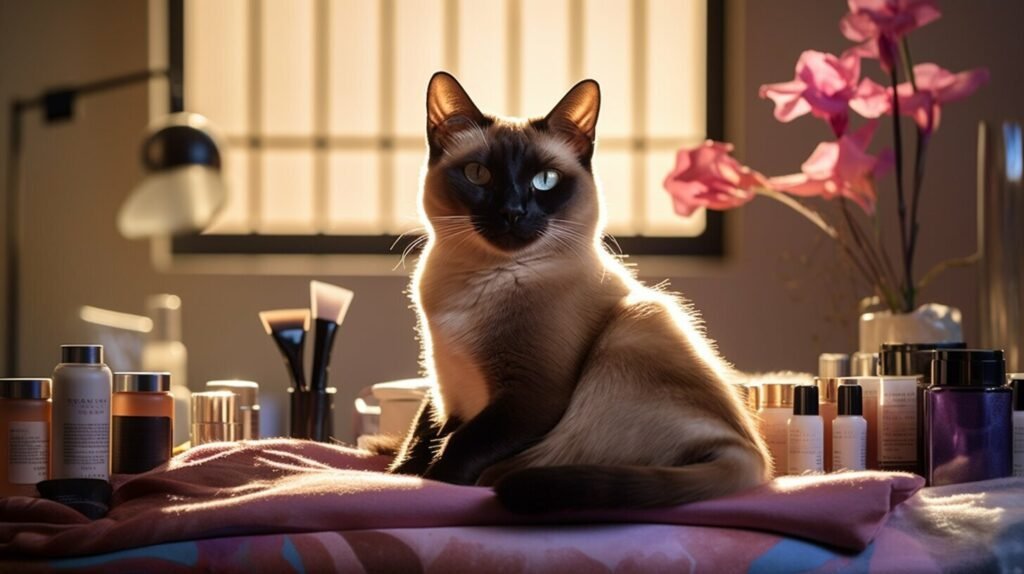
Frequently Asked Questions (FAQs)
Here are some frequently asked questions regarding Siamese cat colors:
Can Siamese cats change color?
Yes, Siamese cats may experience a change in coat color as they age. This is due to genetic factors and is most commonly seen in the seal point variation, which may darken over time. Other factors such as health and environmental changes may also impact coat color.
Is it possible to breed for specific Siamese cat colors?
Yes, it is possible to selectively breed for specific coat colors in Siamese cats. However, it is important to note that this should only be done responsibly and with the well-being of the cats as the top priority. Breeders should also have a thorough understanding of feline genetics and color inheritance.
What is the best way to groom a Siamese cat for optimal coat color?
Regular grooming is key to maintaining a Siamese cat’s coat color. This includes brushing their fur regularly to remove loose hair and prevent matting, as well as bathing them occasionally with a gentle, cat-specific shampoo. A healthy diet and regular veterinary checkups can also contribute to a vibrant coat.
What is the difference between a tortie point and a tortoiseshell cat?
A tortie point Siamese has a dark coloring on the points of their body (i.e. ears, face, tail), with a mix of red, cream, and/or brown patches on their body. A tortoiseshell cat, on the other hand, has a mix of black and orange fur throughout their entire body, with no distinguishable points.
Are Siamese cats more prone to certain coat color-related health issues?
There is no evidence to suggest that Siamese cats are more prone to health issues related to coat color. However, it is important to note that all cats should have regular veterinary checkups regardless of their coat color to maintain overall health and well-being.
Can Siamese cats have white fur?
No, Siamese cats do not naturally have white fur. However, they may have paler variations of their recognized coat colors, such as the cream point variation.



























